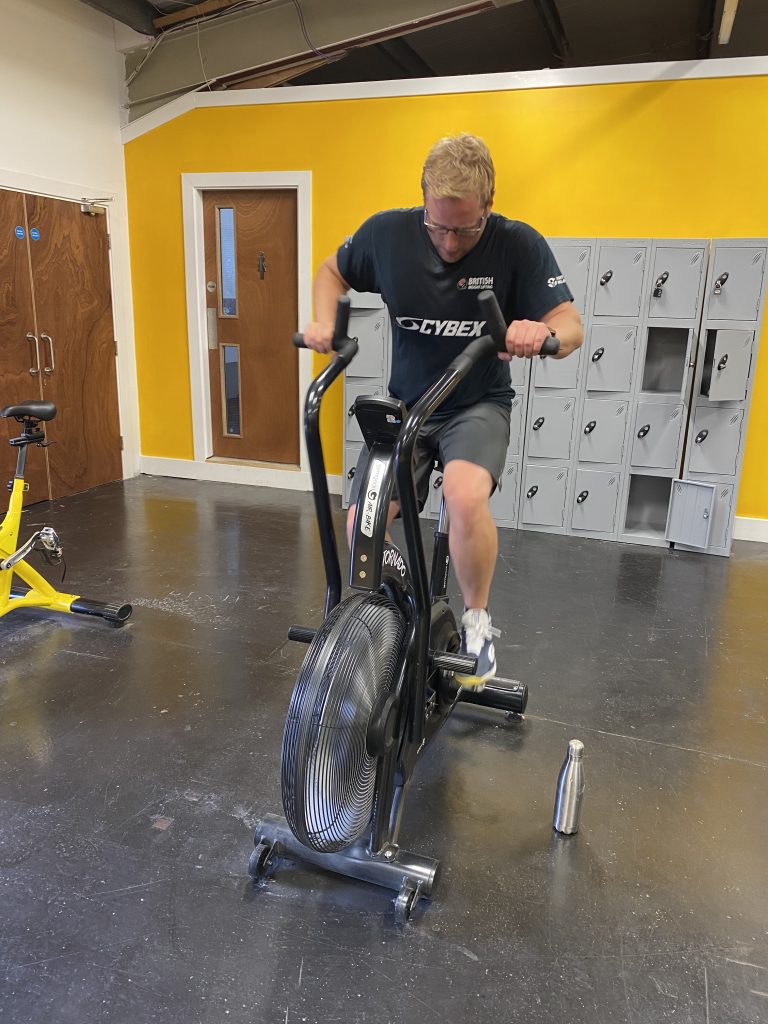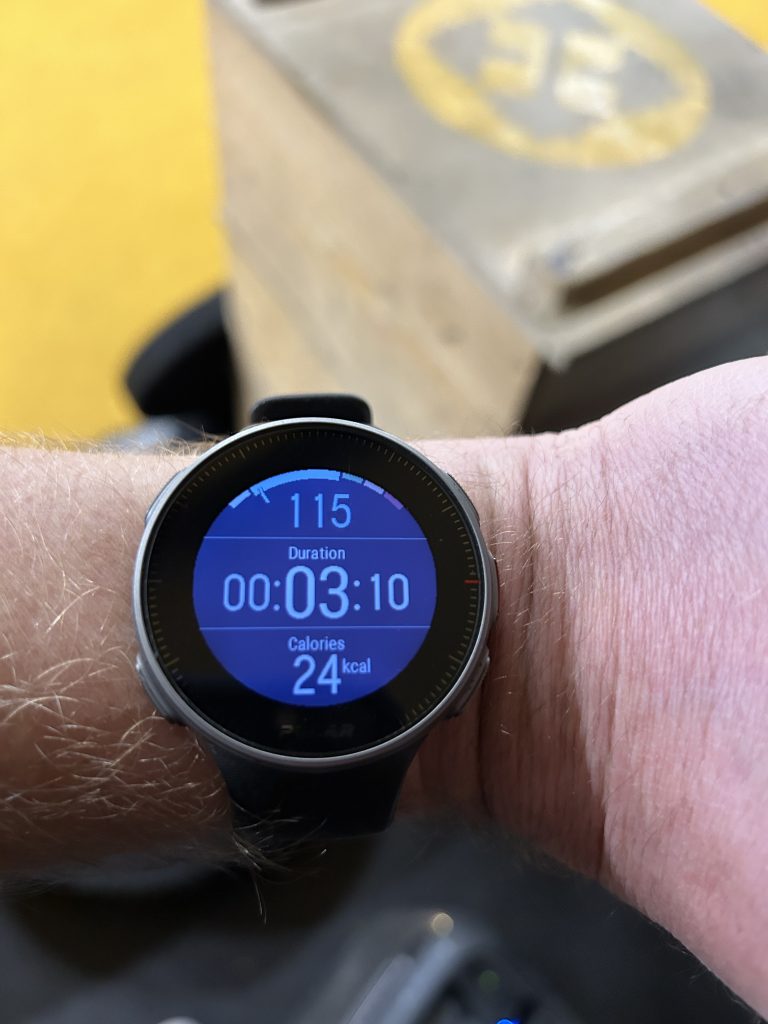Everything You Need to Know About Zone 2 Cardio
Zone 2 cardio is a relatively recent addition to the general fitness lexicon. It has been around forever, but like many things it wasn’t given any attention until somebody ‘named’ it.
In this guide to zone 2 cardio I’m going to run you through the whole concept. I’ll explain what zone 2 cardio is, what it’s good for, how to get into zone 2, how long you should be staying there for and everything in between.
By the end of the post, you’ll be a zone 2 cardio expert!
What is Zone 2 Cardio?
Zone 2 cardio is a state of cardiovascular exercise where your heart rate remains between 65 and 75% of it’s theoretical maximum.
It is intentionally ‘easy’ cardio. The idea is that you maintain this low intensity training for a long time, accumulating a lot of training volume (and associated benefits) whilst keeping the injury risk very low. The cost:benefit ratio is hugely in favour of zone 2 cardio.
There’s no right or wrong way to perform zone 2 cardio, other than to make sure you stay in the right heart rate zone for as long as you need to. If you push the intensity too hard, you’ll slip out of zone 2 and change the training outcomes.

What are the benefits of zone 2 cardio?
We’ll look at the physiological benefits and training benefits of the approach here, using evidence from various scientific studies…
Increased rate of fat oxidation
In 2020, a study titled ‘Low-intensity exercise stimulates bioenergetics and increases fat oxidation in mitochondria of blood mononuclear cells from sedentary adults‘ discovered that when you keep cardiovascular exercise intensity very low (50 watts in this case), you burn fat at a higher rate than you would at higher exercise intensities.
As a low intensity exercise, it would be open to use by anyone, from the super fit to the obese. The injury risk is almost zero.
Improved cognitive functioning
Low to moderate exercise has been shown to help improve cognitive function, mood and general brain heath. A study published in 2018 titled ‘Effects of Physical Exercise on Cognitive Functioning and Wellbeing: Biological and Psychological Benefits‘ looked at the effects of moderate (zone 2) exercise on the brain.
The researchers concluded ‘physical exercise determines positive biological and psychological effects that affect the brain and the cognitive functioning and promote a condition of wellbeing’.
Better cardiovascular health
The big needle mover for general health from zone 2 cardio training is the impact it has on the cardiovascular system.
In a study titled ‘Dose-response relationship of the cardiovascular adaptation to endurance training in healthy adults: how much training for what benefit?‘, researchers found that 3 months of frequent low intensity cardio training resulted in… ‘Decreased blood pressure, heart rate, and total peripheral resistance, and increased cardiovascular variability and arterial baroreflex sensitivity’ (which keeps blood pressure stable).
Improved recovery from high intensity training
Physiologically, it’s impossible to train at a high intensity all of the time without adequate recovery. You can’t run an engine in the red zone for long, so to speak. With zone 2 training, you allow the body an opportunity to recover whilst still exercising. You also help to improve blood flow, which increases the delivery of recovery agents to the muscles.
In a study titled ‘Effects of Individualized Low-Intensity Exercise and Its Duration on Recovery Ability in Adults‘, researchers concluded ‘Low Intensity Exercise for at least 1 hour, twice a week, for 4 weeks is suggested to improve recovery ability in adults.’
Ability to achieve higher training volumes
Training and recovery perfom a delicate balancing act. If you train harder, you’ll need longer to recover and vice versa. By spending more of your time training in zone 2, you can accumulate much more training time and the physiological cost remains low. This is especially true if your training of choice has low/no impact on your joints. Swimming, cycling, rowing etc are good examples of low impact activities that can be performed in zone 2.
As we’ve discussed previously, the zone 2 work can actually help subsequent recovery from higher intensity exercise.
The conclusions to draw is that there are several important benefits from performing zone 2 cardiovascular training. These benefits are especially useful if you have a high volume training schedule throughout the week.
Is zone 2 cardio good for fat loss?
The short answer is ‘yes’. The longer answer is ‘as long as it is part of an effective multi-dimensional approach.’
Here’s why…
Low intensity cardio burns a high percentage of fat as fuel during the activity. It doesn’t burn a huge amount of energy overall though, unless you do it for a very long time. A 30 minute easy walk for a 95kg man would only burn around 250 calories.
Switch that to an hour walk and include a gentle hill or two, and you’ll see that walk burn 600+ calories.
If your fat loss approach included resistance training to build/maintain muscle whilst you burn energy, zone 2 cardio to help increase overall energy expenditure and a calorie controlled diet, you’d lose a lot of fat safely and effectively.
In the right circumstances, zone 2 cardio is excellent for helping to accelerate fat loss.
How to calculate your own zone 2…
It’s generally accepted that zone 2 is around 60-70% of your theoretical maximum heart rate.
If you’re using a modern heart rate monitor, it’ll tell you what zone you’re in (mine indicates what zone I’m in with a colour code). If you don’t have a monitor that tells you this, don’t worry.
I can help you work out what zone 2 is for you, then you can stick to that range. I’ll give you an example for a 40 year old, but it’s the same formula for any age. You just subtract your own age from 220 at the start of the formula to give you your starting number.
So, for a 40 year old the formula looks like this…
- 220 – 40 = 180 (theoretical maximum heart rate)
- 180 x 0.6 = 108
- 180 x 0.7 = 126
So the 40 year old knows that their ‘zone 2’ cardio range for heart rate is between 108 and 126 beats per minute.
Here I am, slap bang in the middle of zone 2…

How do I know if I’m in Zone 2?
The best and most accurate way to know if you’re in zone 2 is by using a heart rate monitor. That will give you real time, accurate heart rate data.
You can set your watch to beep at you if you exceed your target heart rate zone. This would be an indicator to reduce your workout intensity and get back to zone 2. It will also give you real-time calorie burning data.
A less accurate way to know if you’re in zone 2 would be to use the ‘talk test’. If you can talk to someone during your cardio workout (up to slightly breathlessly), you’re probably in zone 2. If you can’t talk to someone, you’re probably exceed zone 2 cardio.
How long should I be in zone 2 for?
This depends on a number of factors, including but not limited to…
- Training goal – fat loss, cardio improvement etc
- Recovery status – are you fresh or tired
- Type of training you’re doing – is it high or low impact on the joints?
As a general rule, if you’re fresh I’d be aiming for around 45 – 60 minutes of zone 2 cardio a couple of times per week. This is ideal for general health or fat loss.
If you’re using zone 2 cardio to improve your aerobic base, I’d spend up to 60 – 90 minutes 4 times per week there. To help recovery though, I wouldn’t be doing much else in the way of high intensity working out.
If you are tired and you’re using zone 2 to help recovery (and not for fat loss/aerobic benefits), then I’d aim for a couple of 20-30 minute sessions per week.
Results dictate any change to the amount of zone 2 cardio you need to perform.
What kind of exercise is best for zone 2 cardio?
In my opinion the best kind of exercise for zone 2 cardio is anything low impact and easy to manipulate from an intensity point of view.
Particular favourites of mine are walking, rowing and cycling. I tend not to do running for my zone 2 work because it’s harder to keep at a low intensity. I don’t use swimming or ski ergs either, because I find it really hard to perform these exercises and keep an eye on my heart rate monitor watch!
How to include zone 2 cardio in your workout program
When it comes to programming your zone 2 cardio, you have to consider the wider context and your training goals.
If you are using zone 2 as part of a fat loss strategy, it has to be balanced with strength training and a calorie controlled diet. You should bias strength training over zone 2 cardio, because the diet will do most of the work for the fat loss.
If your goal is fat loss… Aim for 2 x 45 minute zone 2 sessions per week. Perform 3 x resistance training sessions per week. Make sure your diet has a daily calorie deficit of around 500 calories.
If your goal is endurance building… You should focus on zone 2 work in higher volume. You could get away with 4 x 60-90 minute workouts, especially if they’re low impact. If they’re higher impact, stick closer to the 60 minute mark.
If your goal is general health… I would be hitting 2-3 x 30-45 minute zone 2 cardio sessions per week. You can do this post resistance training, or on their own dedicated days.
Final thoughts on zone 2 cardio
I’ve been around long enough to have seen plenty of fitness fads come and go, so forgive me if I don’t tell you that zone 2 cardio is the BEST. THING. EVER. Or that you should sack off the rest of your training and only do that.
Zone 2 has its place. HIIT has its place. Intervals have their place. They’re just tools.
The beauty of zone 2 cardio is it’s accessible – anyone can do it. There are also many benefits, and very little in the way of downsides or ‘costs’ to your body. There’s very few people who wouldn’t benefit from the addition of some zone 2 cardio to their schedule.
However, you shouldn’t be using zone 2 cardio to replace your weight training. You also can’t rely on it for ALL of your specific cardio needs. It’s just one training option.
If you’re training for a sport such as football, rugby, basketball etc, zone 2 alone isn’t going to be effective. You’ll need some sprint work in there too, because you need to train the high intensity stuff too. I also think if you have goals to be seriously fit, you need to train all aspects of your fitness, which includes the high intensity cardio output.
If you have a general, non-sport specific goal then it’ll do you just fine. It’s helpful for recovery, and it’ll keep your ticker in decent working order!